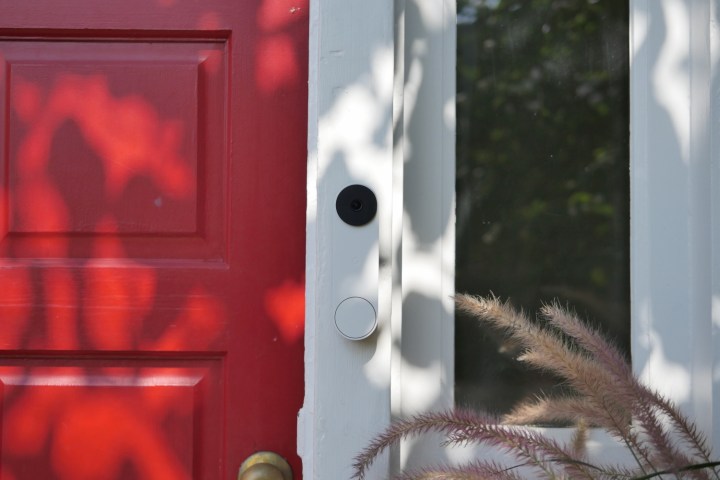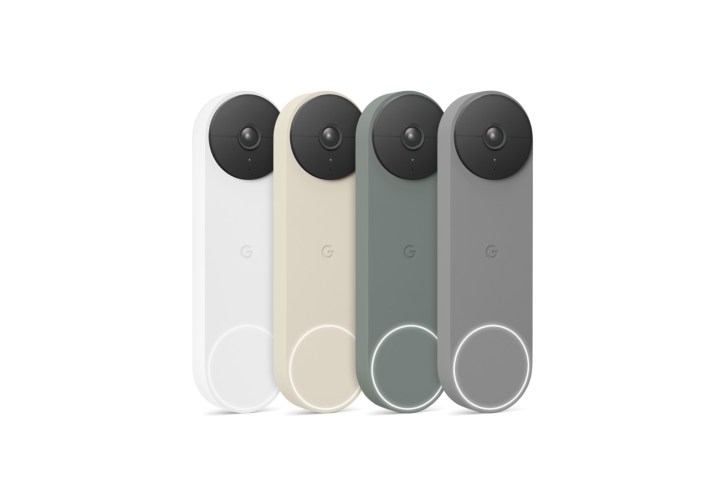Video doorbell cameras are often one of the first external pieces of smart home tech consumers buy. Not only do they help keep an eye on our environment, but they double as communication devices for delivery drivers, guests, and others. Google recently released its second-generation Nest Doorbell (wired) and improved the Google Home app, but is it really worth upgrading if you have the base model?
Google’s new doorbell

The new Google Nest Doorbell (wired) shares a similar design to the battery variant, although it is shorter since no batteries are required. It has a flat, matte design that comes in four colors to match nearly any home. To initiate a call, there’s a big button at the bottom, which is illuminated around the edge. There’s also an equally significant and prominent lens at the top of the doorbell.
Not only did Google change the design to be in line with its battery doorbell redesign, but it also added feature parity to the model. As a result, all the features introduced in 2021 are shown in this new wired version of the Nest Doorbell, including short-length local video storage, two-way audio, customizable activity zones, and facial, pet, and package recognition.
Wired vs. battery
Speaking of the battery variant, there aren’t many differences between the two Nest Doorbells. Of course, the way they utilize power is different but feature-wise, the wired doorbell’s only advantage is continuous recording.
Continuous recording allows you to go back in time and see what has happened in front of your door, not just from when an event or alert occurred. Unfortunately, even though the Nest Doorbell (wired) has this ability, it’s still locked behind a $12/month Nest Aware Plus subscription. Consider that when choosing between the wired and battery version of the Nest Doorbell.
New vs. old

The original Google Nest Doorbell (wired) was first made available in 2018 before rebranding last year. While the former version of the Nest Doorbell had plenty of features for its time, the new version does improve on some essential traits.
Instead of only doing photos for the last 3 hours of event activity, the Nest Doorbell (wired) 2nd generation retains short video clips. It can also record for up to an hour after a power failure. Last, more alert detection features are available for free instead of being locked behind a Nest Aware subscription. Plus, the new version is cheaper. The second-generation Nest Doorbell retails for $180 while the original first retails for $230, but it can often be found cheaper by any store that still carries it.
App importance
While we won’t discuss the Google Home app redesign in great detail, Google talked extensively about it when it announced the new Nest Doorbell (wired). The new design puts a lot of emphasis on live camera views and gets ready for new Matter devices. It also basically becomes a remote for your camera view upfront. Google also stated that an automation tab would appear in the app soon, allowing for customization with if-this-then-that activities.
Who should upgrade?
With all that said, is the Google Nest (wired) 2nd generation worth the switch or upgrade? From the original generation, yes, you should probably upgrade your video doorbell. You’ll get a more modern design, a better quality video, and more free features, which will have you considering if your Nest Aware subscription is worth it. For example, having video clips in your event history is much more helpful than just photos, and having battery backup is excellent, even if only for an hour.
Switching from the battery version to the wired version should only be considered if you want continuous recording and are already a Nest Aware Plus subscriber. Given those two answers, remember there are many other choices for smart video doorbells.



